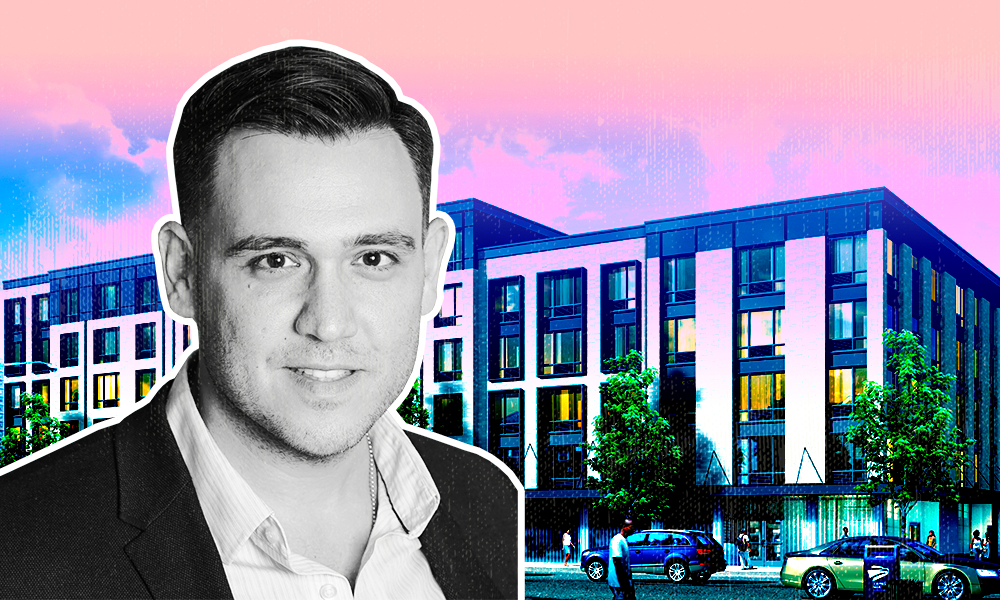It shouldn’t be news to anyone, but New York is at an affordable housing crossroads.
“We are in a homelessness crisis, and the driving factor is lack of affordable housing,” mayoral candidate and Brooklyn Borough President Eric Adams said in a statement last month. “Why, then, are affordable units in [the Housing Preservation and Development Department’s] portfolio sitting empty right now that struggling individuals and families could be living in?”
Adams isn’t alone in his push to move the 55,000 New Yorkers who slept in shelters in January, according to a report from the Coalition for the Homeless, into long-term affordable housing fast. It’s been the battle cry of those in the affordable housing business for decades.
Last month, the state’s new $212 billion budget set aside $100 million toward turning commercial properties into permanent affordable housing. That potentially paves the way for a measure introduced by Sen. Michael Gianaris allowing the state to acquire and convert distressed hotels and offices into housing for homeless New Yorkers and those earning up to 50 percent of the area median income .
Both politicians and real estate experts now hope that after years of foot-dragging and equivocation, the results of the June 6 mayoral primary could finally send the city down a path toward sensible policy on affordable housing.
“Demand for affordable housing could not be any higher, but the priorities on the agency level just haven’t been there,” said Ariel Aufgang, the principal at Aufgang Architects, which has been in the New York affordable and market-rate housing business since 1971. “Good projects are thrown away or delayed as we wish for that perfect project, and this doesn’t help get people out of homeless shelters.”
Sam Chandan, founder of Chandan Economics, a leading economic advisory and data science firm serving the institutional real estate market, agrees. He told The Real Deal that the next mayoral administration should reduce zoning barriers and put financial incentives in place or make financing more readily available to incentivize property owners to convert their buildings to become affordable housing.
“Affordable housing is expensive because the cost of building is high and it’s very difficult,” Chandan said. “But after 9/11, for example, liberty bond financing was used to convert from commercial to residential. Fast-forward to the current year, where we have a strong residential corridor that is now better in Manhattan and historically has been higher than ever. The availability of bond financing helped facilitate that. It’s a good case example of how our city — and any city for that matter — can spur growth in a housing sector.”
Aufgang added that whoever becomes the next mayor needs to focus on four things to resolve the city’s current housing crisis: new construction of affordable housing on privately owned land; new construction of affordable housing on city-owned land; rezoning; and the renovation of existing rent-stabilized housing.
“People don’t like to talk about this crisis, but there is an answer: building more housing, full stop,” Aufgang said. “Nothing else produces a unit besides allowing people to produce more units. Nothing else gets people out of an apartment that is full of rats or that has no heating and into a brand-new building. That is the urgency.”
But even with the political will, politicians and developers cannot realize those goals without the right partners, Aufgang added. It takes an experienced, expert architect acting as a team leader, consultant and planner to get these complex builds done efficiently and to the benefit of the public.
“Affordable housing is a completely different business than, say, designing a 30-unit, market-rate rental building,” he said. “It is a much more involved process. These projects are privately owned and government-subsidized. That means that there are more agencies involved. There is more review and approvals. There is more accountability. Everything is more, and not just anyone can do it.”
Not just anyone can do it, because affordable design requires “architecture,” rather than “design,” he added.
That means doing architecture in a broader and more traditional sense as planners, facilitators, advocates, business people and strategists, who also do design.
It’s a class of architect that has almost disappeared in New York as luxury developers have given over the design process to brokers and marketing teams, leaving little for the offices of most designers to do — besides obsess over hallway moldings.
“I go to every ribbon-cutting and speak to the people who move into our buildings,” said Aufgang. “I went to a project in the Rockaways, and a brand-new tenant walked into the apartment with me and he literally cried because he had a thermostat. He said, ‘I can control my own heat?’ He had never seen that before. So I don’t care if I didn’t get the doorknob or the flooring that I liked. I can’t change lives with design, but I can change lives by making these jobs happen.”
Adams has proposed that the city provide subsidies to help homeless people move into vacant affordable units within the city’s portfolio of 300 public housing developments, subsidized new construction and in the Mitchell-Lama program –— which regulates below-market-rate rents in privately owned buildings.
But regardless of who is elected or whose plan becomes policy, Aufgang said that his firm will stay true to its mission.
“We want to affect people’s lives,” he said. “It’s very gratifying to see someone come out of a homeless shelter or come off the street and into an apartment. That person appreciates what you are doing so much more than when you build a luxury condo. There is an element of philanthropy in almost everything we do, and that keeps us focused. We are citizens of the world.”
To discuss affordable housing directly with Ariel enter your info below.


